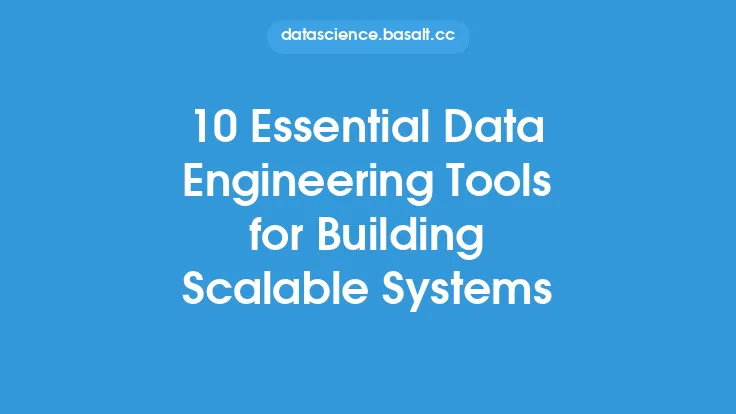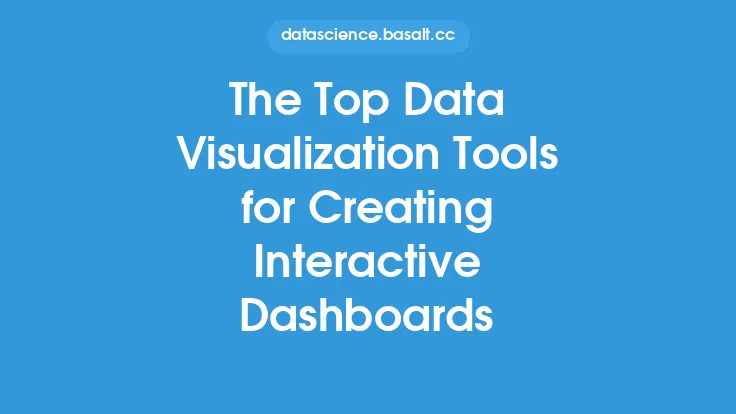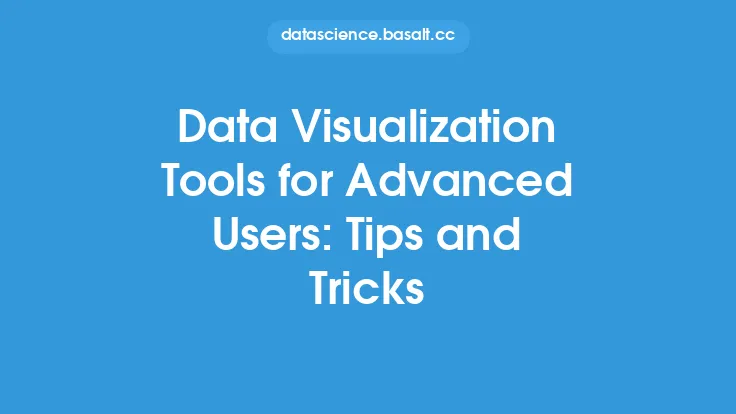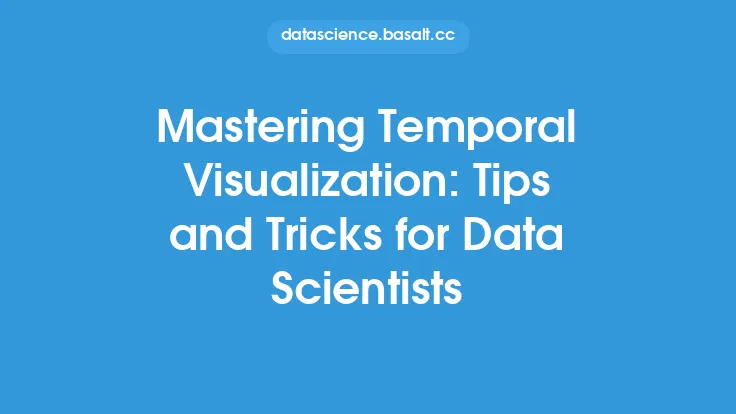As a data scientist, having the right tools at your disposal is crucial for effectively communicating insights and trends in data. Data visualization is a key aspect of this process, allowing you to transform complex data into intuitive and informative graphics. With so many data visualization tools available, it can be overwhelming to choose the ones that best suit your needs. In this article, we will explore 10 essential data visualization tools that every data scientist should be familiar with.
Introduction to Data Visualization Tools
Data visualization tools are software applications that enable users to create interactive and dynamic visualizations of data. These tools provide a wide range of features, including data import and manipulation, visualization creation, and sharing and collaboration capabilities. When selecting a data visualization tool, it's essential to consider factors such as ease of use, customization options, and compatibility with various data formats. Some popular data visualization tools include Tableau, Power BI, and D3.js, which offer a range of features and functionalities to support data analysis and visualization.
Data Visualization Tools for Statistical Analysis
For data scientists who work with statistical analysis, tools like R and Python are essential. R is a popular programming language for statistical computing and graphics, offering a wide range of libraries and packages for data visualization, including ggplot2 and Shiny. Python, on the other hand, is a versatile language that offers a range of libraries, including Matplotlib, Seaborn, and Plotly, which provide a wide range of visualization options. These tools enable data scientists to create complex visualizations, such as heatmaps, scatterplots, and bar charts, to communicate insights and trends in data.
Data Visualization Tools for Business Intelligence
Business intelligence tools like Tableau and Power BI are designed to support data analysis and visualization in a business context. These tools offer a range of features, including data connectivity, visualization creation, and sharing and collaboration capabilities. Tableau, for example, provides a user-friendly interface for connecting to various data sources, creating interactive visualizations, and sharing dashboards with stakeholders. Power BI, on the other hand, offers a range of features, including data modeling, visualization creation, and business analytics capabilities.
Data Visualization Tools for Web Development
For data scientists who work with web development, tools like D3.js and Chart.js are essential. D3.js is a popular JavaScript library for producing dynamic, interactive data visualizations in web browsers. It offers a wide range of features, including data binding, animation, and interaction capabilities. Chart.js, on the other hand, is a lightweight JavaScript library for creating responsive, animated charts. These tools enable data scientists to create interactive and dynamic visualizations for web applications, supporting data analysis and visualization in a web context.
Data Visualization Tools for Machine Learning
Machine learning tools like TensorFlow and PyTorch are designed to support data analysis and visualization in a machine learning context. These tools offer a range of features, including data preprocessing, model training, and visualization capabilities. TensorFlow, for example, provides a range of visualization tools, including TensorBoard, which enables data scientists to visualize model performance, weights, and biases. PyTorch, on the other hand, offers a range of visualization tools, including PyTorch Ignite, which provides a range of visualization options for model performance and training metrics.
Data Visualization Tools for Big Data
Big data tools like Apache Zeppelin and Apache Superset are designed to support data analysis and visualization in a big data context. These tools offer a range of features, including data ingestion, processing, and visualization capabilities. Apache Zeppelin, for example, provides a web-based notebook interface for data ingestion, processing, and visualization, supporting a range of data formats, including CSV, JSON, and Avro. Apache Superset, on the other hand, offers a range of features, including data visualization, dashboards, and alerts, supporting a range of data formats, including SQL, NoSQL, and cloud-based data sources.
Data Visualization Tools for Geospatial Analysis
Geospatial analysis tools like ArcGIS and QGIS are designed to support data analysis and visualization in a geospatial context. These tools offer a range of features, including data ingestion, processing, and visualization capabilities, supporting a range of data formats, including shapefiles, GeoJSON, and CSV. ArcGIS, for example, provides a range of visualization tools, including maps, 3D scenes, and charts, enabling data scientists to communicate insights and trends in geospatial data. QGIS, on the other hand, offers a range of features, including data visualization, spatial analysis, and mapping capabilities.
Data Visualization Tools for Real-Time Data
Real-time data tools like Apache Kafka and Apache Storm are designed to support data analysis and visualization in a real-time context. These tools offer a range of features, including data ingestion, processing, and visualization capabilities, supporting a range of data formats, including JSON, Avro, and CSV. Apache Kafka, for example, provides a range of visualization tools, including Kafka Streams, which enables data scientists to visualize real-time data streams. Apache Storm, on the other hand, offers a range of features, including data visualization, real-time processing, and event-driven architecture.
Data Visualization Tools for Collaboration
Collaboration tools like Google Data Studio and Microsoft Power BI Service are designed to support data analysis and visualization in a collaborative context. These tools offer a range of features, including data sharing, visualization creation, and collaboration capabilities, supporting a range of data formats, including CSV, JSON, and Excel. Google Data Studio, for example, provides a range of visualization tools, including reports, dashboards, and data sources, enabling data scientists to share insights and trends with stakeholders. Microsoft Power BI Service, on the other hand, offers a range of features, including data visualization, business analytics, and collaboration capabilities.
Conclusion
In conclusion, data visualization tools are essential for data scientists to effectively communicate insights and trends in data. With so many tools available, it's crucial to choose the ones that best suit your needs, considering factors such as ease of use, customization options, and compatibility with various data formats. The 10 essential data visualization tools outlined in this article, including Tableau, Power BI, D3.js, R, Python, and Apache Zeppelin, provide a range of features and functionalities to support data analysis and visualization in various contexts, including statistical analysis, business intelligence, web development, machine learning, big data, geospatial analysis, real-time data, and collaboration. By leveraging these tools, data scientists can create informative and interactive visualizations, supporting data-driven decision making and communication.





